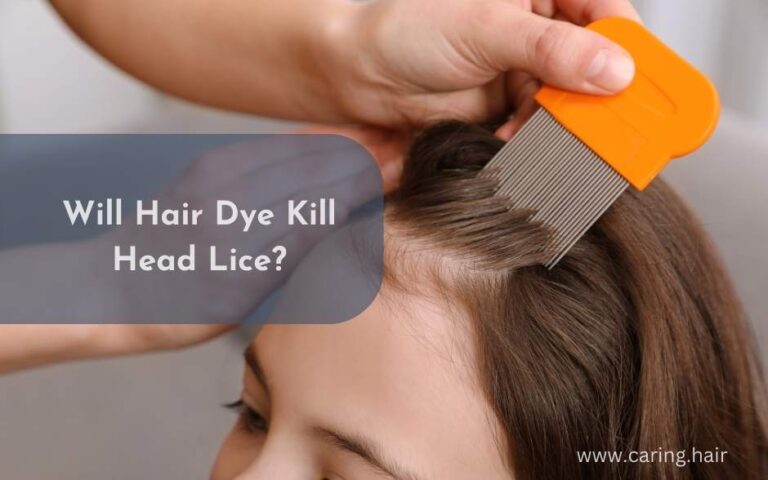When dealing with head lice infestations, individuals often seek out various remedies to eliminate these pesky parasites. One question that frequently arises is whether hair dye can effectively kill head lice. In this guide, we’ll explore the effectiveness of hair dye as a potential treatment for head lice infestations.
Can Hair Dye Kill Head Lice?
Hair dye may indeed kill adult lice and juvenile lice (nymphs) in some cases. The chemicals in certain types of hair dye can be toxic to lice. However, it’s important to note that hair dye generally does not kill lice eggs (nits) because the chemicals are unable to penetrate the hard shells of the eggs
Hair dye contains chemicals that are designed to alter the color of hair by penetrating the hair shaft. While these chemicals may have pesticidal properties, their effectiveness in killing head lice is limited. Head lice are highly resilient insects, and they have developed resistance to many traditional insecticides, including those found in hair dye.
While some individuals may report temporary relief from head lice after using hair dye, it is unlikely to provide a long-term solution. Additionally, the use of hair dye on the scalp can pose risks such as skin irritation and allergic reactions.
- Permanent hair dye contains ammonia, which is an alkaline and produces an irritating gas. This may be why hair dye seems effective at killing lice.
- Some hair dye solutions also include hydrogen peroxide, which could contribute to its effectiveness against lice.
- However, nits are encased in a hard shell, and hair dye cannot penetrate this shell or detach the natural glue-like substance adhering the shells to hair.
Alternative Treatments for Head Lice:
Instead of relying solely on hair dye to eliminate head lice, there are several alternative treatments that may be more effective:
- Over-the-counter lice treatments: There are numerous over-the-counter products available specifically formulated to kill head lice and their eggs (nits). These treatments often contain ingredients such as pyrethrin or permethrin, which are insecticides known to be effective against lice.
- Prescription treatments: In cases of severe head lice infestations or when over-the-counter treatments fail, a healthcare provider may prescribe stronger medications, such as malathion or benzyl alcohol.
- Manual removal: Combing through the hair with a fine-toothed comb (often called a lice comb) can help physically remove lice and nits from the hair shaft. This method may be time-consuming but can be effective when used in conjunction with other treatments.
- Home remedies: Some people opt to use home remedies such as suffocating agents (e.g., mayonnaise or olive oil) or essential oils (e.g., tea tree oil) to kill head lice. While these methods may be natural, their effectiveness is not well-supported by scientific evidence.
Preventing Reinfestation:
In addition to treating head lice infestations, it’s essential to take steps to prevent reinfestation. This includes:
- Avoiding close head-to-head contact with individuals who have lice.
- Laundering bedding, clothing, and personal items in hot water and drying them on high heat to kill any lice or nits.
- Vacuuming upholstered furniture and carpets to remove any stray lice or nits.
- Encouraging children to avoid sharing hats, hairbrushes, and other personal items that may spread lice.
